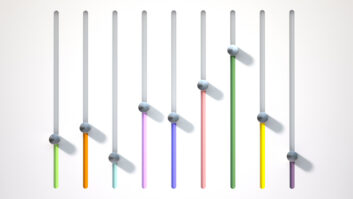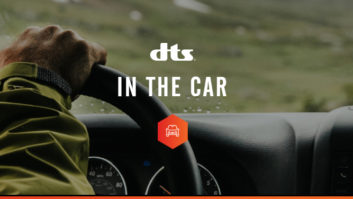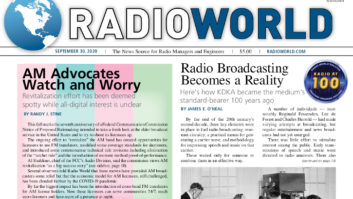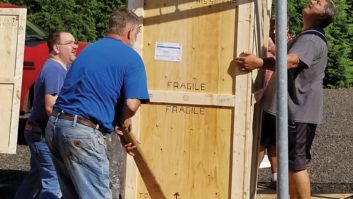A technical session in the upcoming virtual Radio Show will focus on a topic of growing importance to U.S. broadcasters: hybrid radio.
As Radio World readers know, the term refers to in-car radio radios that can receive analog AM/FM or HD Radio over the air but also connect to the wireless internet to download station graphics, song information and station identifications.
Hybrid radios also support interactivity between the listener and the station. And they can switch seamlessly from a station’s broadcast signal to its audio stream whenever the vehicle drives out of the station’s broadcast coverage area.
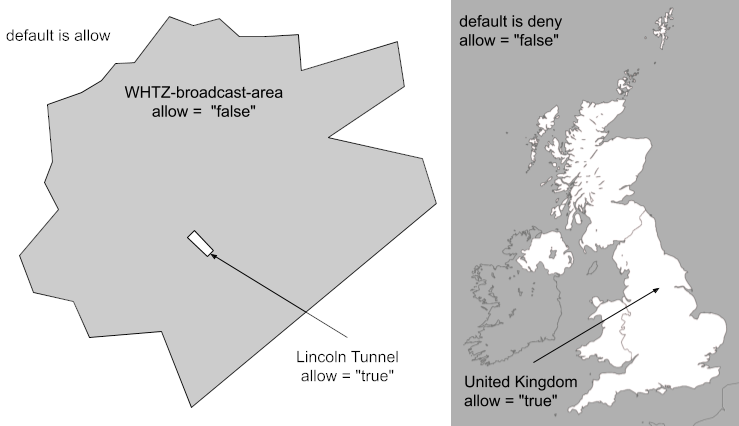
For radio broadcasters concerned about losing in-car listeners to non-radio streaming services, advocates say hybrid radio is a timely solution that marries broadcast radio’s strengths — free service, localism and wide coverage — with the power of streaming audio including global reach, rich multimedia content and interactivity.
The technology has been talked about at spring and fall broadcast conventions for years but is taking on more urgency as hybrid radio-equipped vehicles start appearing in the United States, and as AM and FM broadcasters watch SiriusXM roll out its own enhanced 360L platform, which includes personalization and on-demand features.
Benefits
The session “How Radio Broadcasters Can Support RadioDNS” will be presented on Monday Oct. 5 by Nick Piggott, project director of RadioDNS. It’s a not-for-profit membership organization that is promoting the adoption and deployment of hybrid radio globally using open standards.
David Layer, NAB’s vice president of advanced engineering, will moderate.
On one level, the presentation will bring session participants up to speed on hybrid radio’s progress.
“We’ll be talking about hybrid radio’s capabilities and what it can do for radio stations as we’re starting to see more hybrid radio-capable devices proliferate, particularly in cars,” said Skip Pizzi, NAB’s vice president of technology education and outreach.
Piggott also will explain how radio managers can move into this medium through their own efforts or by hiring a third-party contractor.
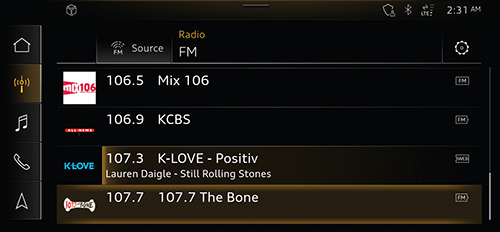
“We’ll provide a simple step-by-step guide under the headline, ‘So you’ve decided you’d like to do hybrid radio,’” said Piggott.
“It will be reasonably but not impenetrably technical, so that somebody who has a basic understanding of technology within their radio station or radio group can walk away thinking, ‘I know how we’re going to do hybrid radio. I can see how we’re going to do this.’”
The session will include a discussion of the issue of restricting in-car streaming within a station’s main coverage area, so that broadcasters do not find themselves paying higher streaming music royalties for content that can be heard easily over the air. This is a software-configurable restriction based on constantly comparing the vehicle’s GPS location to the station’s core coverage area.
Tools for Broadcasters
As an open-standards advocacy group, RadioDNS exists to help stations understand and implement hybrid radio solutions.
The Technical Section of its website (https://radiodns.org/technical/) offers a range of downloadable “How To” documents detailing each stage of implementing RadioDNS hybrid radio, from creating station logos and other metadata to station registration, implementing high-definition visuals and setting program listening restrictions by time of day or to a specific program.
The website’s technical section includes a number of presentations on managing RadioDNS hybrid radio applications and support for stations doing this on their own.
By digging into the nuts-and-bolts of hybrid radio in a plainspoken manner, Piggott hopes to make the concept accessible to radio engineers and non-engineers alike. This is why he, NAB and RAB are putting this discussion forward.
“My goal is to demystify the technology and encourage broadcasters not to be apprehensive about trying it,” Piggott said. “That’s the headline: Taking the Fear Out of Hybrid Radio Through RadioDNS, So That Broadcasters Can Do It Themselves.”
Read about other technical sessions at the show.
For a deeper discussion of hybrid radio, see the recent Radio World story “Hybrid Radio Picks Up Momentum” at https://tinyurl.com/rw-hybrid-2.
